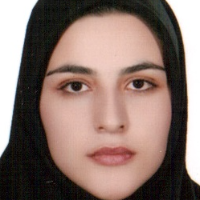Investigation of quality of life indicators by Structural Equation Modeling in the city of Sarpol-e Zahab
Today, studies of quality of life have mainly focused on the urban environment, and the quality of urban life and its study is of great necessity and importance. Urban areas are always faced with important issues such as social deprivation, unemployment, housing shortages, insecurity, etc., severely affecting the quality of urban life. Irregular physical growth of cities, changes in the socio-economic structure, traffic and pollution, quality of housing, the existence of parallel organizations in the management of urban centers, and the lack or improper distribution of recreational spaces have caused a decline in the quality of life in urban centers. Today, with the expansion of cities and increasing inequalities, studies of quality of life have become an important tool for planning and managing cities. For urban planners, managers, and policymakers, especially cities that shape the quality of life, the core of the planning process and policy decisions, Studying the quality of life is very important. Through identifying problem areas, discovering the causes of citizens’ dissatisfaction, social, economic, and environmental factors affecting the quality of life, citizens’ priorities in life, and monitoring and evaluating the efficiency of urban policies and strategies, these studies have made a significant contribution to the development of urban strategies and policies. Considering the importance of the issue of quality of life, the main goal of this research is to investigate the status of quality of life indicators using the structural equation model in Sarpol-Zahab city.
The method of the present study is applied in terms of purpose and descriptive-correlational in terms of method. The statistical population is the citizens of Sarpol-e Zahab city. According to the size of the population (N = 45481), 381 of these people were calculated using Cochran's formula and distributed by simple random sampling. The quality of urban life tool developed by Ebrahimzadeh asmin and Karbakhsh (2017) was used to collect information. This questionnaire consists of 29 questions and 5 components that were used to analyze the data using SPSS 25 software (Cronbach's alpha) and LISREL 8.8 (structural equation modeling, confirmatory factor analysis).Sarpol-e Zahab city is one of the western cities of Kermanshah province. Sarpol-e Zahab city is located 177 km west of Kermanshah and its average altitude is 550 meters above sea level and is located at 45 degrees and 52 minutes east longitude and 34 degrees and 28 minutes north latitude and is the center of Sarpol-e Zahab city. According to the 2016 census, the city of Sarpol-e Zahab has a population of 45,481.
In first-order confirmatory factor analysis models, the scores of each item in a variable reflect the status of that item in a more underlying factor that cannot be measured directly because it is hidden. Chi-square ( (, index chi-square to freedom)df (, comparative fit index (CFI), relative fit index (RFI), non-normalized fit index (NNFI), square root error Mean approximation (RMSEA) were exerted to estimate the model. Regarding CFI, RFI, and NFI indices, some researchers believe that the minimum acceptable value is 0.90, and values above 0.95 indicate excellent model fit. Also, for the RMSEA index, a value less than 080 indicates a good fit for the model. According to the findings, the significance of T-statistic related to each of the questions of the Urban Quality of Life Scale is higher, with a significance level of error is 1.96, and the relationship between structures is meaningful and confirmed.
The results show that in the environmental dimension, the most important factors are the feeling of calm (lack of noise pollution (visual, visual, etc.) and satisfaction with the level of clean air. In the social dimension, satisfaction with the sense of happiness and vitality in the place of residence and the level of interest are the most factors. In the economic dimension, the tendency to continue living if income increases and satisfaction with living costs (water, electricity, gas, telephone, and housing costs) have the most factor. In the physical dimension, satisfaction with the conditions of the residential unit (size, number of rooms, necessary equipment, etc.) and satisfaction with the quality of streets and pedestrian crossings (quality of coverage, width of passages, night lighting, etc.) and the highest factor load. Finally, in terms of urban management, they are satisfied with the services provided by the municipality (timely collection of garbage, sewage and construction waste and the highest factor.
- حق عضویت دریافتی صرف حمایت از نشریات عضو و نگهداری، تکمیل و توسعه مگیران میشود.
- پرداخت حق اشتراک و دانلود مقالات اجازه بازنشر آن در سایر رسانههای چاپی و دیجیتال را به کاربر نمیدهد.


